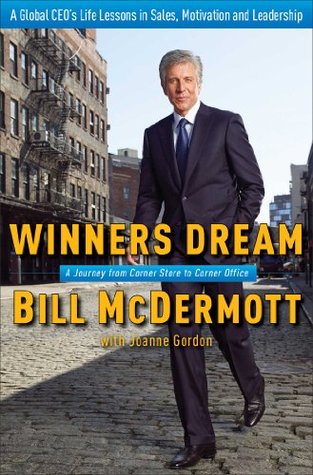More on this book
Kindle Notes & Highlights
Read between
November 15 - November 16, 2020
“Money is only as good as the happiness it can buy you and those you love.”
The unfiltered exposure to my family’s circumstances taught me that hard work did not always pay off. I also understood that anything earned or given could be taken away: a house, a job, a brother. I developed a bias for truth, especially news no one wanted to hear, because the more I knew, the more quickly I could find a solution instead of dwelling on a problem.
I had painted my own vision of what success could look like, and because I believed it, someone else did, too.
My dream was not about being rich, but about high achievement. It was about significance. For a young professional who grew up with very little money, the stuff money could buy was an easy way to measure progress. Ultimately, however, I knew that my life’s value would never be measured by things acquired, but by heart, by will, and by honor.
I never cut corners when it comes to helping people, because that’s when I fly.
To get what I want, I have to give others what they want: performance. Unless I consistently meet and exceed goals and deliver on promises, no one owes me a thing. Passion is important, I know. Passion propels me forward during tough sales days and gives me the courage to take risks. Passion drove me to Stamford. But even if I want something more, I will never get what I want unless I have results to show for all my effort.
If we take people as we find them, we may make them worse, but if we treat them as though they are what they should be, we help them to become what they are capable of becoming. —JOHANN WOLFGANG VON GOETHE
Plotting my first hundred days on the job, I framed my intentions. To make Team F the top new-business sales team in the country, I would do everything I could to give my team a reason to strive for it, the confidence to go for it, and a map to get there.
“Leadership,” he liked to say, “is the art of developing followership.”
Prizes were fun and intoxicating, but the high wore off. The more powerful, lasting motivator was the idea that we were all working together toward a crazy miracle.
The people in our district did not fear change. What they feared was what most people feared, which was change without well-defined expectations, change without a plan, and change without a goal.
Change is the price of survival. —WINSTON CHURCHILL
PEOPLE ARE MOST likely to change their minds when the world they once knew no longer exists. A leader’s challenge, then, is to explain why the old world went away, show people what the new world looks like, and get them excited to be a part of it.
To paraphrase Winston Churchill, the further back we looked, the further forward we would be able to see.
Abundance begets abundance. So in order to move people at XBS to expect more of themselves, I had to give them more.
The kickoff was not about me or other leaders doing all the talking. We wanted people in the trenches to be heard and to hear one another.
Winning was the process, not the destination. A journey of striving to be better—to be kinder, more compassionate, hungrier, more humble, more audacious, more inspiring, more rigorous—that was what turned me on, what inspired me. The quest was the best.
if a vision is not supported by the workforce, even the most brilliant ideas risk being nothing more than lightbulbs in a basket.
The audacity of any dream must be paired with the micromanagement of reality.
A good strategy had to be easy to understand. Some people, I believed, confused complexity with a great strategy and equated volume with intelligence. The strategy for the delicatessen, for example, had been clear: provide exceptional customer service. A strategy also had to be true to an organization’s core strength, which, too, was true at the deli.
Empathy was at the heart of design thinking’s approach, which dictated that creators of any product, technological or otherwise, answer yes to three sets of questions to determine if an idea was worth pursuing: Is the idea desirable? Do people want it? Is it feasible? Could it be built to work? Is the idea viable as a business? Will people pay for it?
Companies need inventors of products and builders of businesses—and we need each other.
After all the envisioning and motivational talk, leaders have to plant their feet on the ground and get to work, executing with precision. If dreaming requires optimism, audacity, and empathy, bringing dreams to life is a more concrete endeavor, demanding hard work, discipline, teamwork, communication, and courage.
This also had given me more appreciation for what I called my “abundance mentality,” which was the notion that every individual at a table has something meaningful to contribute.
Leadership, I also had come to believe, was not about providing all the answers but about looking for and presenting the next questions.
Leaders came in many forms, but I had long believed that they shared two undeniable traits. First, they brought others to places no one had ever been. Second, leaders had followers.
Simplicity was not about being small, simpleminded, or easy. On the contrary, simplicity was sophistication in disguise. Simplicity prioritized. Simplified ideas invited everyone in and freed people to see the world from a sharper but shared lens.


